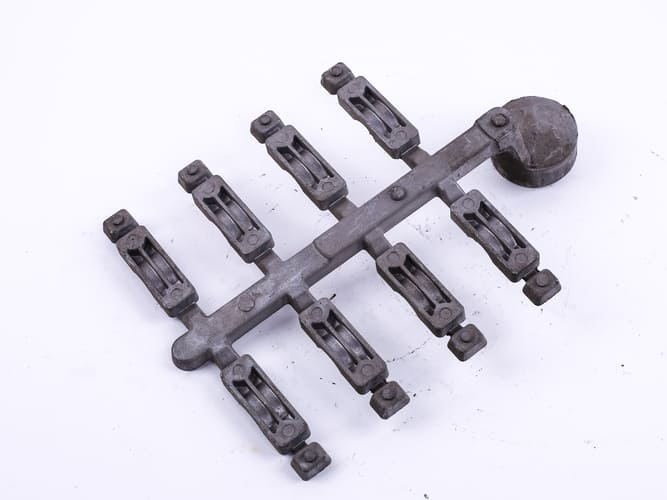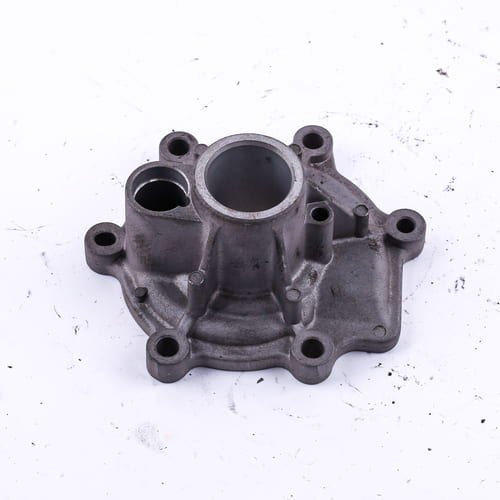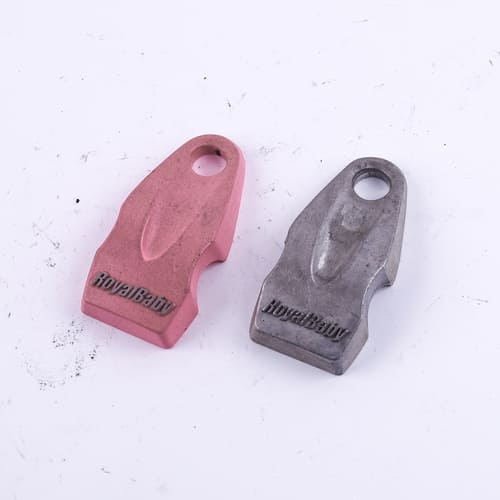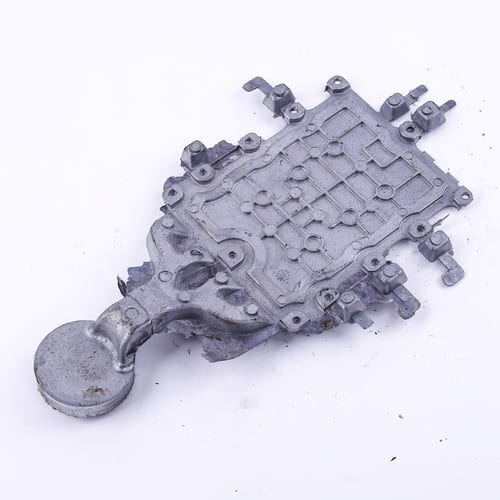Manufacturers of aluminium cast products always want their castings to be fit, proper and aesthetically pleasing. One of the ways to ensure this is by polishing the castings.
There are different methods of polishing cast aluminium. In this article, we will note and explain these different methods. Okay so, let’s dive in.
Why is polishing important?
Polishing is the finishing done on cast products to make the castings shiny, reflective and aesthetically pleasing. It adds to the cosmetic value of die-cast parts.
It helps to create mirrored finishing effect on the parts. A properly polished aluminium casting is more physically appealing than an unpolished one.

Because of the abrasive process in polishing, it prevents further oxidation of aluminium castings. It enhances the appearance of the castings. It improves the neatness of the cast parts and prevents them from harbouring bacteria.
Polishing increases the durability of castings. It also reduces corrosion and electrical resistance of aluminium. It helps the castings to have strong electrical conductivity.
Unpolished cast parts may have some burrs and pits which can negatively impact the die casting. Polishing helps to remove such weak spots in the cast parts. Generally, polishing improves the overall function of cast parts.
Methods of polishing cast aluminium
(1.) Using machines for polishing cast aluminium
This involves the use of automated machines in polishing cast parts. It is suitable for large-scale polishing. it is less time-consuming and cost-effective.
Although this may require upfront expense of procuring necessary machines. However, it reduces per unit cost.
Depending on the size of the cast parts, you can use this method to polish different parts at the same time.

There are different high-end equipment you can use. These include:
(a ) Vibratory machine: This machine is suitable for large-scale polishing. It perfectly removes dirt and burs; and creates isotropic surface finishing on the die casting.
The vibratory machine contains a process chamber that is usually lined with polyurethane or a rubber guard. The process chamber has a counter plate on which the motor is mounted. It is often circular. The motor is fitted to the machine.
The machine also contains abrasive media. The media removes the burs and polish the casting. To polish a cast part, place the part into the vibratory machine.

The vibration will cause the abrasive media to move in a corkscrew action. This oscillating movement will cause the contact rubbing of the media and the cast parts. So, the media is able to alter the surface of the cast aluminium and polish it
Preferably, the media of your vibratory machine should be smaller. Smaller media can produce smoother and better polishing. This is because smaller media will have more contact with the cast part than the larger media.

Note that abrasive media is quite lightweight and soft. So, the cast part will not be scratched during polishing. You can easily custom-build vibratory finishing systems to suit different applications. Also, they are easy to load and unload.
There are different types of media you can use in polishing. If you don’t want to use abrasive media, you can use porcelain tumbling media. It contains white clays, kaolin, alumina, etc.
If you want to remove stains caused by machining on the cast parts, you can use the plastic tumbling media. It contains polyester and abrasives.

(b.) Centrifugal machine: A centrifugal machine is driven by an electric motor. It puts the cast parts in a rotation movement and this guarantees centrifugal force in the casting. This separates the burs and polishing of the cast parts.
Specifically, centrifugal machines are suitable for polishing small and tiny aluminium cast parts. It also supports batch processing and produces excellent polishing.

(c.) Industrial Barrel Tumble: This involves placing aluminium cast parts into a horizontal barrel along with finishing media, and then using centrifugal force to clean.
This machine functions by tumbling cast parts in a rotating barrel. This results in friction against the parts and other materials such as media.
This machine is suitable for large-scale polishing of aluminium casting parts. It is cost-effective, swift and efficient. You can calibrate the barrel tumbling machine for different purposes, such as breaking the edges, removing oil, ensuring mirror-finishing in the casting, etc.

Note that barrel tumbling is more aggressive than vibratory finishing. So, it is preferable when polishing harder aluminium that needs serious polishing. However, you can always vary the impact of the tumbling by adjusting the finishing media.
Remember not to load excess parts into the machine. Otherwise, the cast parts will not be neatly polished. The lesser the die-cast parts in the barrel, the more excellent the polishings.

(2.) Manual methods of polishing cast aluminium
This involves applying abrasive material to the cast parts with hands. The different methods of manual polishing include:
(a.) Use of acid-based solution
This involves the following processes:
• Remove the oxidized coating on the aluminium cast parts.
• Clean any dirt or debris on the cast products by wiping with a clean cloth. If the cloth does not perfectly clean the cast part, try using a non-abrasive cleaning pad to clean.

• Mix lemon juice or vinegar with cups of water. Note that you can use commercially-prepared acidic cleaners or use a DIY cleaner, using lemon, tomatoes, etc. Preferably, don’t use acids like hydrofluoric acid or bleach. They can negatively impact the cast parts.
• Dip a clean cloth into the mixture and use it to clean the cast parts.
• You can then wipe with a dry clean cloth. Ensure that you wipe the whole parts of the cast part.
(b.) Polishing by using sheet metal
This involves the following procedures:
• Remove any coating on the cast part. Ensure the casting has no debris, grease or dirt. Otherwise, this can affect the polishing.

• Mount a 40-grit-5-inch sanding disc on a power drill. You can then sand down any rough surface and marks on the casting. Remember not to gouge the metal as aluminium is quite soft.
Preferably, use wet sanding and pure-soak the sandpaper. Using wet sand will minimize the health risks associated with dust. If the aluminium cast part has a flat piece, try using a rubber packer. This will enhance even pressure across the surface of the casting.
For contoured areas, use a foam pad instead. Note that at this point, the severe marks on the casting may not be removed yet.

• You can then rinse the cast parts with water. Thereafter, sand the casting with an 80-grit sanding disc and the 180-grit disc. Consider using the conical sanding for hidden places in the casting that are difficult to polish.
• Rinse the cast part with water again. Then, sand the casting with 120-, 180-, 240-, 320-, 420-, 600- grit sandpaper. You should use wet sandpaper. By the time you move to the 600 grit, your focus will be on wiping the sand marks. This is because other defects in the cast parts would have been smoothened out by then.
• Place a polishing pad on the power drill and apply polishing rouge to the buffing wheel. Before buffing, apply a cutting compound to the buffing tool. The cutting compound protects the metal and gives it good aesthetics.

Avoid pressing the cast part too hard. Also, polish evenly and should be in a warm environment. To polish the hidden areas in the casting, use a cone-shaped polishing pad. At this point, the cast part will appear more lustre and shiny.
• Finally, you can also polish with a new clean pad and use less abrasion.
(c.) Polishing using aluminium polish
• Apply aluminium polish to a clean and soft cloth. Apply it to the cast parts. Polish in circular motion till black residue appears.
• Remove the polish with a soft cloth. You have to thoroughly wipe the black residue off the cast parts.
• Thereafter, buff with a new cloth. Carefully clean the surface of the cast parts.

(d.) Polishing with cream of tartar and water
The cream of tartar is a white powder made from fermenting grapes into wine. To use in cleaning aluminium cast parts:
• Mix the cream of tartar with water
• Using a soft cloth, apply the mixture to the surface of the cast part.
• Rinse the part with water Ensure you remove all the cream of tartar from the cast part.
• Dry off the part with a microfiber, neat and soft towel.
Conclusion
In this article, we have taken you through the various methods to polish your cast aluminium. These methods include using machines such as vibratory and centrifugal machines. The manual methods include using acid-based solution, sheet metal, etc.








